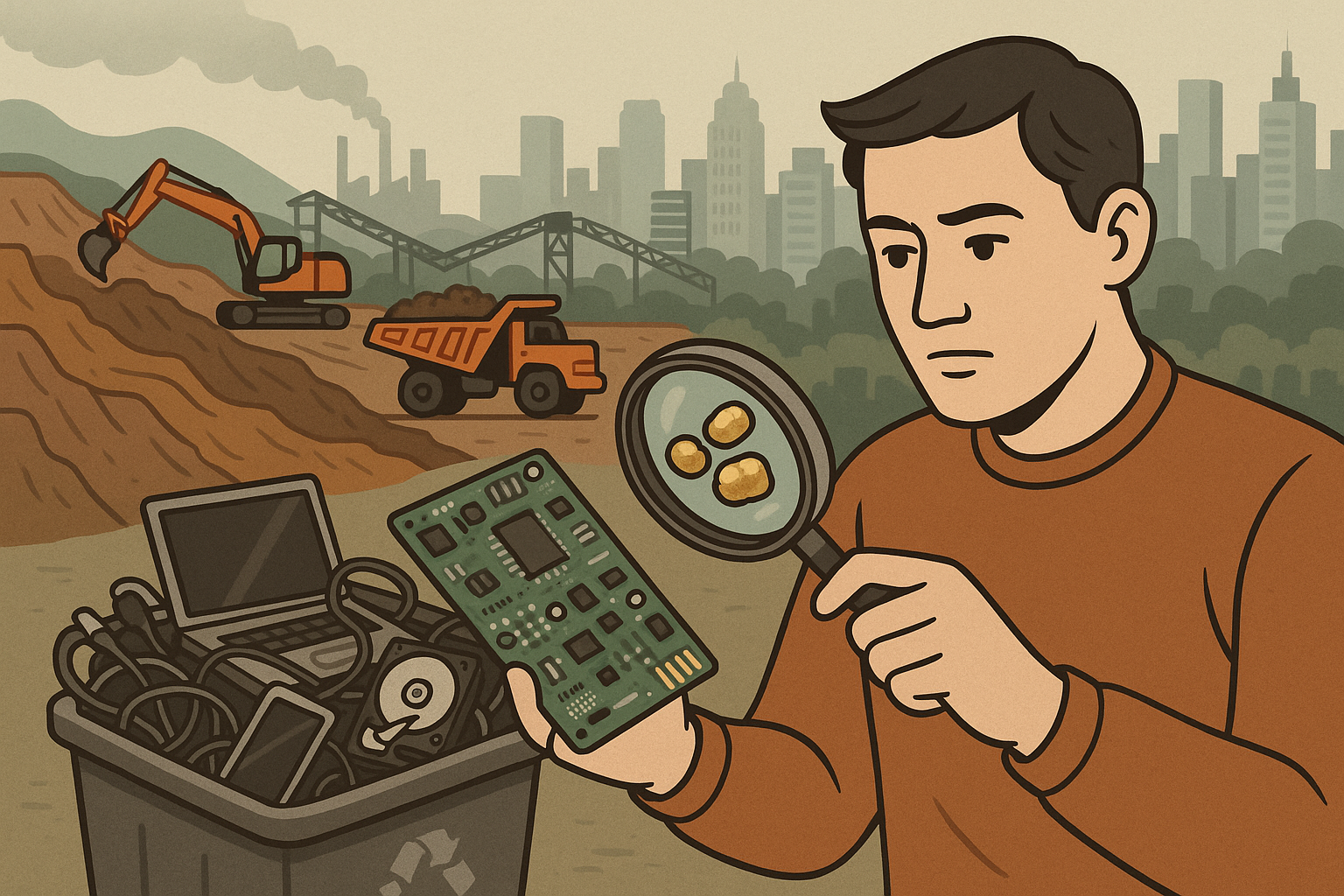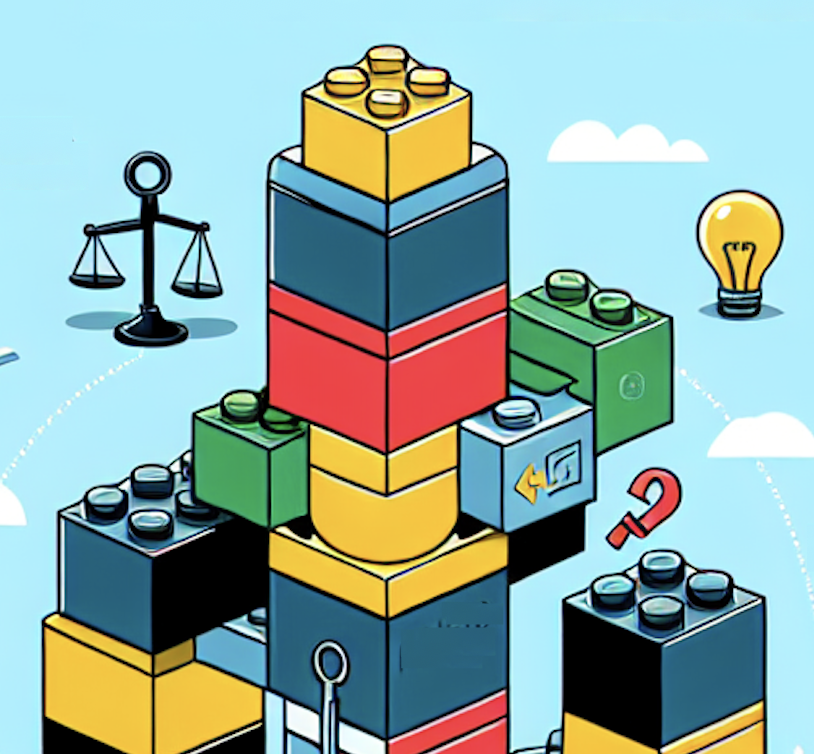
Understanding 'Urban Mining' in the face of mining curbs and supply dominance
There are crises that creep in slowly and others that land like a thunderclap. China’s recent restrictions on rare earth magnet exports? That’s the thunderclap.
The very magnets that power our electric vehicles, wind turbines, and smartphones are now at the heart of a global supply chain crisis. And India being ambitious % electrifying, and still building; sits uncomfortably close to the eye of the storm. But this isn't just a story of scarcity. It's also one of creative reinvention. Because as we scramble for access to neodymium and samarium, the answers may not lie under the earth, but in our drawers, landfills, and scrapyards. Let us take a closer look.
China has the rare earth mining advantage and has raised the red flag, possibly as a hit back on the US tariffs. In April 2025, China imposed new export restrictions on key rare earth materials; including neodymium-iron-boron (NdFeB) and samarium-cobalt (SmCo) alloys. India, relies on Chinese suppliers for over 85% of its rare earth magnet needs, the ripple effect is imaginable. The auto industry body has raised their private warnings on possible production delays and even a drastic halt.
The crux is that rare earth magnets are not “nice-to-have”, they are foundational in making those tiny parts that move big machines. On an average an electric car contains 1.5 to 2 kg of NdFeB magnets, while for wind turbines, an average permanent magnet contains 28.5% neodymium among other minerals and weighs up to 4 tonnes. These magnets are powerful, compact, heat-resistant—and extremely hard to substitute without sacrificing performance or efficiency.
The Indian government’s response, while reactive, is starting to show strategic muscle. We are a step closer to moving away from playing catch-up to defining strategy. National Critical Mineral Mission (NCMM), launched in April 2025, this mission aims to secure India’s long-term access to over 30 critical minerals. It promises 1,200 exploration projects by 2030, support for overseas acquisitions of mineral assets establishment 4 mineral parks and incentive schemes for recycling. The Ministry of Heavy Industries is drafting a PLI scheme focused specifically on rare earth magnets. IREL(India) Ltd. currently operates rare earth extraction and separation units in 3 states, with a potential for expansion.
To secure mineral access beyond China, India has been building international alliances. A bilateral working group on critical minerals, especially rare earths and lithium has been in pace with Australia. With Argentina we have an MoU on lithium collaboration through KABIL (Khanij Bidesh India Ltd.). Another with Kazakhstan on joint development of titanium slag facilities.
Now for the part that most headlines are missing; India is sitting on a mountain of rare earths, yes only that we’ve already used them once. You got it right it is sitting unused in houses, offices and across landfills too.
Urban mining is the process of reclaiming valuable metals from electronic waste. And it’s not a pipe dream. India generated over 1.7 million metric tonnes in 2023-24. 1 ton of end of life mobile phones alone can contain up to 3.3 Kg rare earth elements, among other valuable metals.
Several Indian companies are leading the charge in e-waste recycling and rare earth recovery. Attero Recycling is one such based in Uttarakhand, Attero processes approximately 1,000 tonnes of e-waste monthly. The company has developed patented technologies for extracting precious metals and is exploring methods to recover rare earth elements like neodymium. In FY25, Attero expects revenues exceeding ₹1,000 crore and plans to invest further in the coming years to expand its recycling capacities. Recyclekaro an initiative that aims to recycle 400,000 metric tons of waste in 2026, is one of the first lithium-ion battery recyclers in India. With its recent expansion plans from 7,500 to 24,000 tonnes per year. Runaya Pvt. is another player with expansion plans specifically towards rare earth magnets.
Why is it not yet widespread? Recycling isn't glamorous. It continues to be decentralised. And it demands a total rethink of infrastructure, and of how we value materials post-use. As experts say, "Waste is not waste, it’s resource in the wrong place". Designing Electric Vehicles, laptops, even washing machines to allow easy rare earth recovery isn’t just smart but necessary.
Yes, the rare earth crisis is real. Yes, we are behind the curve. But we also have a unique advantage: mining the e-waste. India can leapfrog straight into a magnet economy that’s decentralised, circular, and inclusive. In FISH!, Lundin and Christensen share four principles for energised, purposeful work, Choose your attitude, Play, Make their day, and Be present. Urban mining is messy. But what if it was made entrepreneurial? Gamified e-waste drives? Start-ups that turn old phones into motor-grade magnets? Dignify waste workers. Include them in the value chain. Bring corporates, schools and housing societies into the ecosystem. Acknowledge that building a circular supply chain isn’t a future problem, it is today’s urgency.
And if we get this right, it won’t just solve a rare earth mineral problem, it will redefine how we mine value; from things we once threw away.


